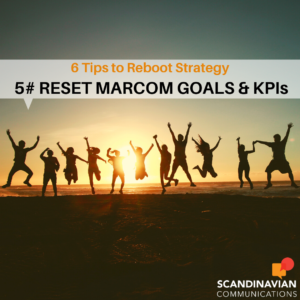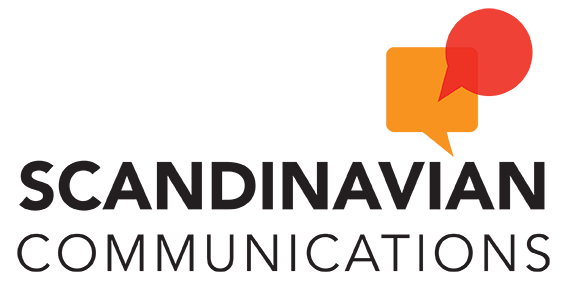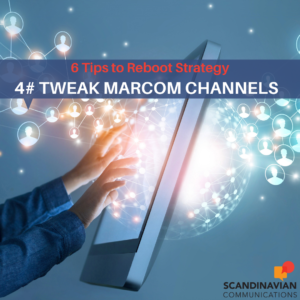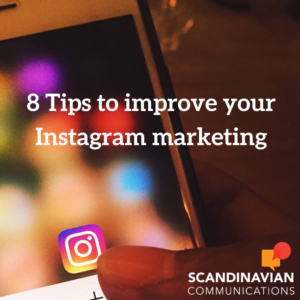
By Christina Rytter, Founder & Trusted Communications Advisor
Remember this! As part of your MarCom strategy – you also need to strategic decide on and set KPIs (Key Performance Indicators) for your communications, PR and marketing. Otherwise, you can only to a lesser extent measure the effect, business value and ROI (Return-on-Investment) of your invested MarCom budget.
So, if you Reboot your Strategy – you of cause also need to Reset Goals & KPIs. When you set KPIs and thereby measure results, you will be able to have a clear evaluation of, what is driving the business forward. AND what is not. You can evaluate and demonstrate the direct business value of communications, PR, marketing and social media to the management and the board.
How to measure MarCom results?
MarCom KPIs can be concrete actions or registration of change in behaviour or point of views in the target group before, under and after your work/campaign. Test the measurability of your indicators with SMART; Specific, Measurable, Achievable, Relevant & Time-bound. When we work with earned communications such as PR you can set both quantitative and qualitative deliverables to get a more sufficient evaluation.
Quantitative PR deliverables could be the number of articles your PR-campaign created separated within your chosen Tier 1 Media in each market. Also looking at the PR-value of each media clipping, which we traditionally measure by finding the Equivalent Advertising Value for each media clip and then multiply the value with 3, because earned media have higher trustworthiness. A quantitative deliverable could also be the measurement of increased website traffic directly related to your PR-results.
Qualitative PR deliverables could be message resonance included in the media coverage such as your Top 1-3 Key Messages. It could be mentions of Brand Name & Product Names and back-links in your media coverage.
In Social and Digital campaigns I would always recommend you to create high-quality content relevant for your key target groups – and then as an ad on set aside a media budget to work with sponsored posts to get a much larger reach and higher amount of web traffic and response from your preferred audience.
KPIs for Social Media could be Engagement and Relevance for your target group measured by; Clicks per post (Traffic to the website), likes, shares and comments. You can also look deeper into development in your followers such as; Audience growth rate, new follower rate, follower/following ratio, which show Thought Leadership position.
SoMe Influencer campaigns can also be very effective when you select bloggers and Instagrammers relevant for your target group to help deliver your key messages. Be aware to set very clear KPIs in paid contracts with influencers to make sure your campaign goals and measure points are clear.
Need help to Reboot your Strategy and reset your MarCom Goals & KPIs? Don’t hesitate to contact us. We are here to help! 😊
Read more Tips to Reboot your Strategy:
Tip 1: Rediscover your purpose
Tip 2: Evaluate your target group
Tip 3: Adapt your Key Messaging
Tip 4: Tweak your MarCom Channels
Tip 6: Create your MarCom Plan
Learn more about Strategic Communications








